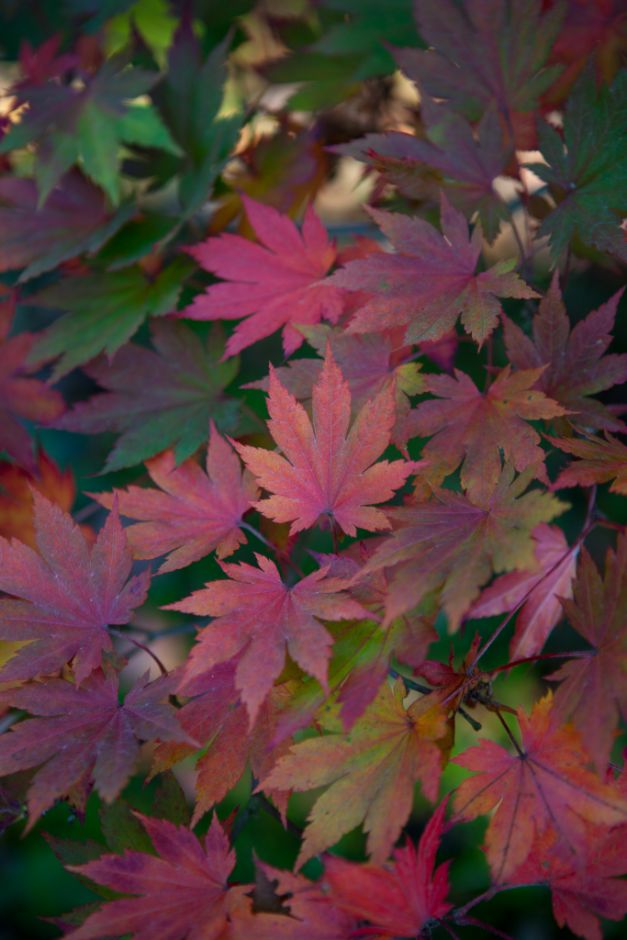Acer pseudosieboldianum
false Siebold's maple
A large bushy shrub, or small tree, of spreading habit to around 7m tall and wide. Its sharply-toothed, nine- to eleven-lobed green leaves, each up to 15cm wide, turn shades of red, orange and yellow in autumn. Purple spring flowers are followed by winged fruits

Buy this plant
Size
Ultimate height
4–8 metresTime to ultimate height
10–20 yearsUltimate spread
4–8 metresGrowing conditions
Moisture
Moist but well–drained, Well–drainedpH
Acid, Alkaline, NeutralColour & scent
| Stem | Flower | Foliage | Fruit | |
| Spring | Purple | Green | ||
|---|---|---|---|---|
| Summer | Green | |||
| Autumn | Orange Red Yellow | |||
| Winter |
Position
- Full sun
- Partial shade
Aspect
South–facing or North–facing or West–facing or East–facing
Exposure
Sheltered Hardiness
H7Botanical details
- Family
- Sapindaceae
- Native to GB / Ireland
- No
- Foliage
- Deciduous
- Habit
- Bushy
- Genus
Acer can be deciduous trees or large shrubs with paired, often palmately-lobed leaves and small flowers followed by characteristic winged fruits. Many have fine autumn colour, and some have ornamental stems
- Name status
Correct
- Plant range
- NE China, Korea
How to grow
Cultivation
Grow in a moist but well-drained soil
Propagation
Propagate by seed or by softwood cuttings
Suggested planting locations and garden types
- Architectural
- Low Maintenance
Pruning
Pests
May be susceptible to Acer gall mite, aphids, caterpillars and horse chestnut scale
Diseases
May be susceptible to Verticillium wilt, Acer leaf scorch and honey fungus
Get involved
The Royal Horticultural Society is the UK’s leading gardening charity. We aim to enrich everyone’s life through plants, and make the UK a greener and more beautiful place.